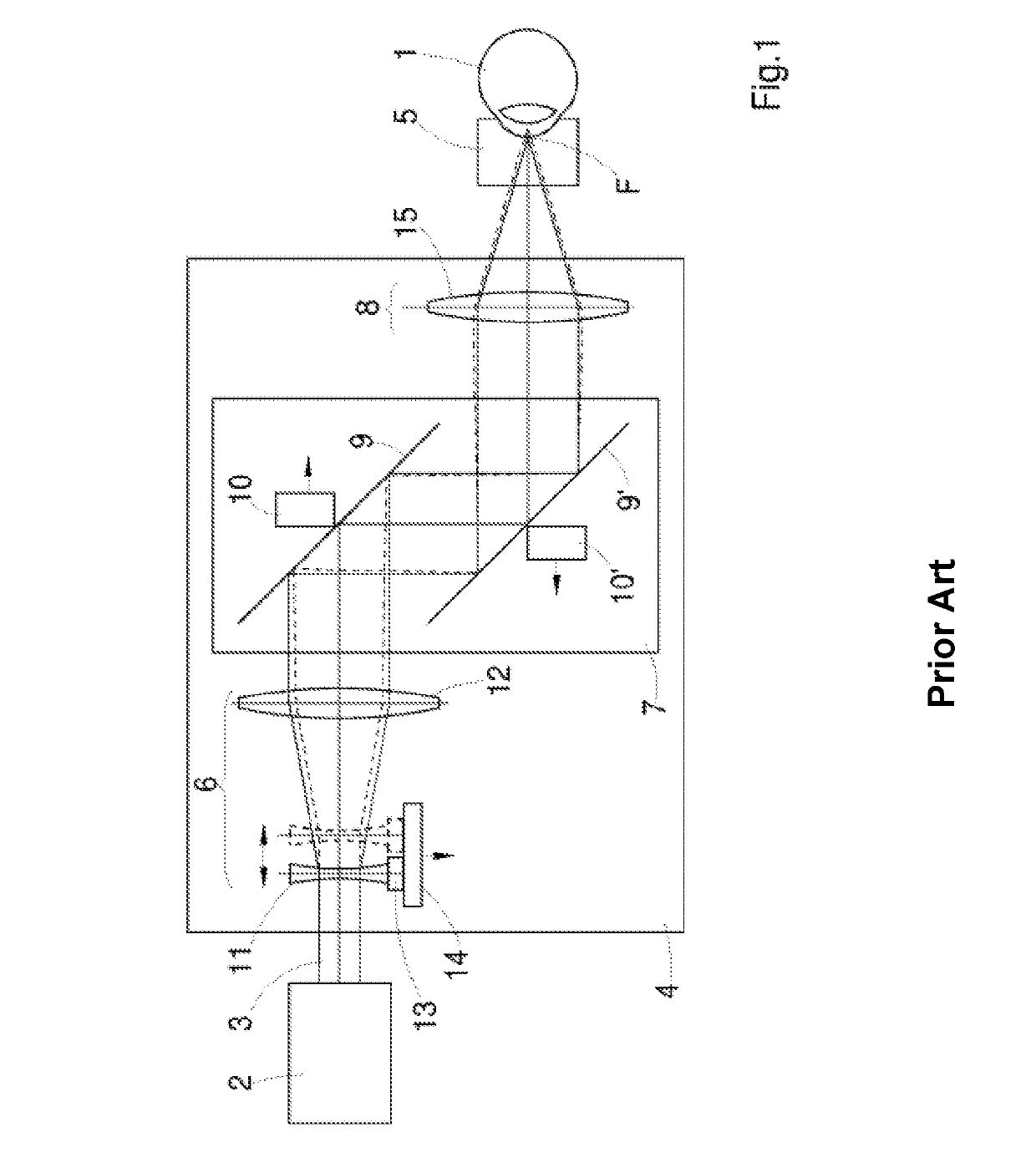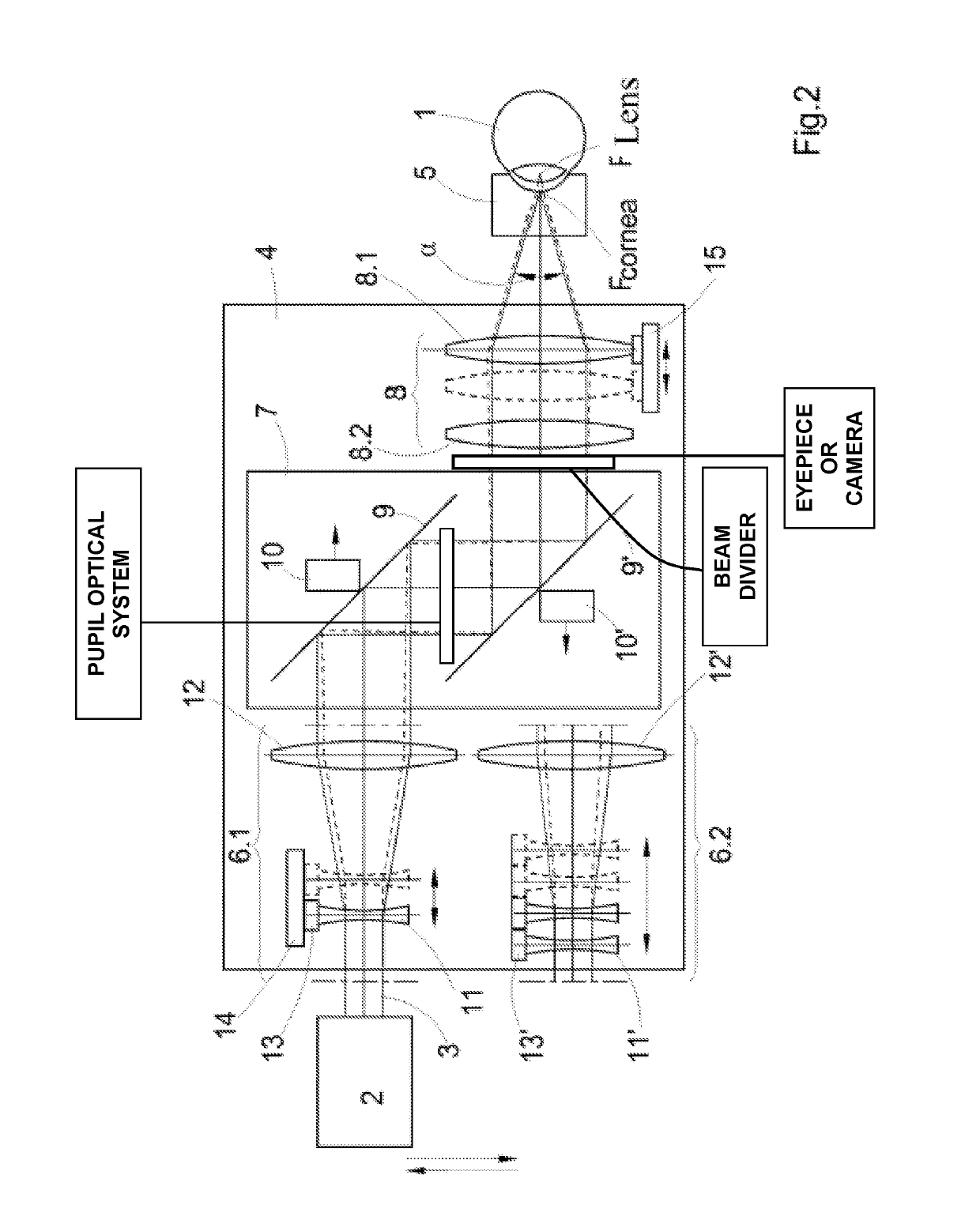Optical system for a laser therapy instrument
a laser therapy and optical system technology, applied in the field of optical systems for laser therapy instruments, can solve the problems of ineffective purchase cost, insufficient instruments available, time-consuming setting up of several instruments for examining and treating the same patient eye, etc., and achieves the effect of avoiding axial resolution loss occurring upon switching between the two configurations, maximum useful aperture and larger apertur
- Summary
- Abstract
- Description
- Claims
- Application Information
AI Technical Summary
Benefits of technology
Problems solved by technology
Method used
Image
Examples
Embodiment Construction
[0033]The optical system shown in FIG. 1, for an instrument for therapy of a human eye 1 represents the present state of prior art. It comprises a radiation source 2, which delivers a beam 3 of pulsed laser radiation in the femtosecond range, and a scanning device 4, with which the beam 3 is focussed onto selected positions within the region of the cornea. On the cornea there is a contact glass 5 that has a concave contact surface and suppresses movements of the eye 1 during treatment.
[0034]The radiation source 2 is designed, e.g., to deliver laser radiation in the wavelength range around 1040 nm with a pulse width in the region of about 200 fs.
[0035]The scanning device 4 has, in the direction of the beam 3 originating from the radiation source 2, an optical assembly 6, behind which in the beam direction, there follows a deflecting device 7. According to given control signals, the deflecting device 7 deflects the beam 3 exiting the optical assembly 6 in a lateral direction, i.e. in ...
PUM
 Login to View More
Login to View More Abstract
Description
Claims
Application Information
 Login to View More
Login to View More - R&D
- Intellectual Property
- Life Sciences
- Materials
- Tech Scout
- Unparalleled Data Quality
- Higher Quality Content
- 60% Fewer Hallucinations
Browse by: Latest US Patents, China's latest patents, Technical Efficacy Thesaurus, Application Domain, Technology Topic, Popular Technical Reports.
© 2025 PatSnap. All rights reserved.Legal|Privacy policy|Modern Slavery Act Transparency Statement|Sitemap|About US| Contact US: help@patsnap.com


